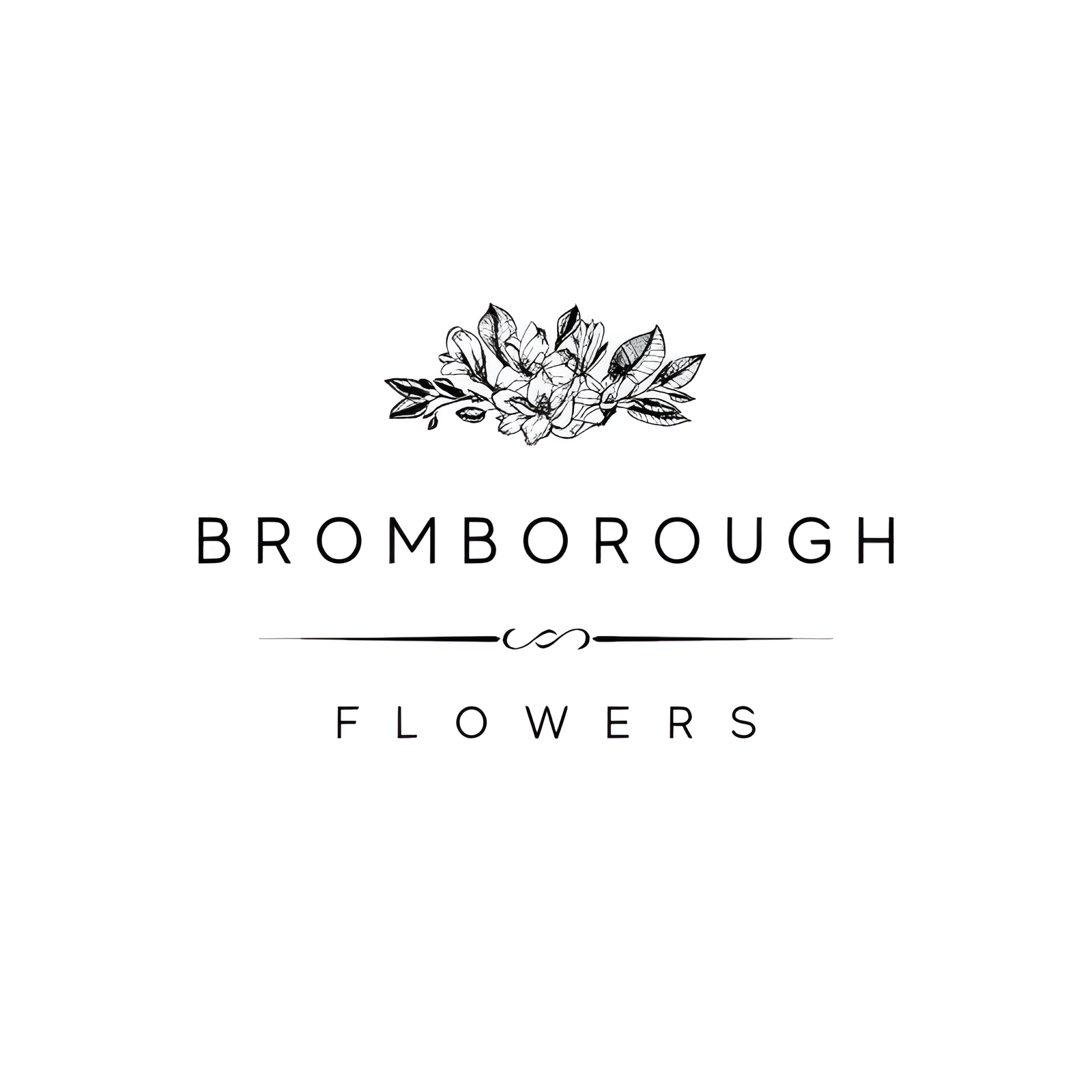In the world of wedding florals, the Hibiscus flower stands out with its large, vibrant blooms and a spectrum of colors that can enhance any ceremony's decorations. Its flexibility and year-round availability, combined with its deep symbolism of love and beauty, make it a captivating choice for bridal bouquets and centerpieces. Additionally, the Hibiscus's ability to thrive in warm climates and its tropical grace provide a distinctive touch for couples. As we delve into the different facets of this beautiful flower, such as its cultural importance and cultivation requirements, one might reconsider conventional options for something more exotic and significant.
Flower Overview
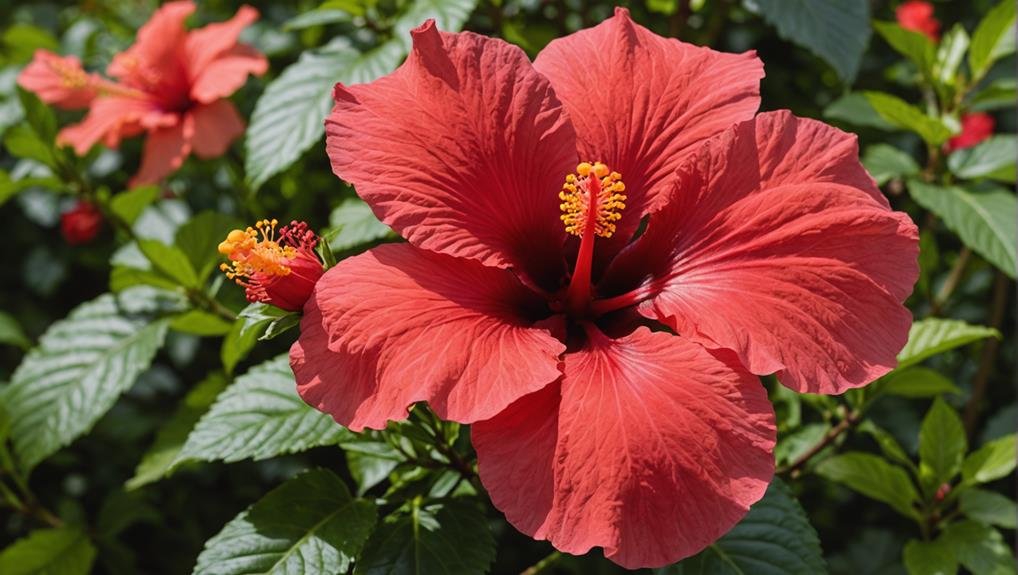
Renowned for its large, trumpet-shaped blooms and vibrant colors, the hibiscus is a quintessential tropical flower often featured in bridal bouquets. With over 200 species primarily originating in Asia, hibiscus flowers are celebrated for their striking beauty and adaptability to warm, tropical climates.
These flowers are not only visually enchanting but also versatile, making them a popular choice in various floral arrangements.
Hibiscus flowers are widely used to make stunning bridal bouquets, often paired with other flowers like roses, lilacs, and alstroemeria to create a harmonious blend of colors and textures. Their lush petals and vivid hues add a touch of elegance and exotic charm to wedding decorations, making them an ideal choice for brides seeking a tropical flair.
Moreover, the hibiscus plant is relatively easy to cultivate. It can be grown from cuttings and thrives in acidic soil with ample sunlight, making it a practical option for gardeners and florists alike.
Beyond their aesthetic appeal, hibiscus flowers hold cultural significance in many traditions. They are associated with spiritual healing properties and are used in Hindu worship, demonstrating their multifaceted role in both horticulture and cultural practices.
Physical Description
Hibiscus flowers are characterized by their large, trumpet-shaped blooms that can span up to eight inches in diameter, bringing a dramatic and vibrant tropical essence to any floral arrangement. These conspicuously colored flowers are renowned for their ability to add a striking focal point to bridal bouquets and other wedding displays. The hibiscus's distinctive size and shape make it a standout choice for those looking to infuse their special day with a touch of the exotic.
The structure of the hibiscus flower is both robust and delicate, featuring five or more petals that fan out from a central stamen, which is often prominently displayed. This unique formation not only enhances its visual appeal but also makes it a versatile component in mixed arrangements with other popular wedding flowers such as roses, bougainvillea, and lilacs. The broad petals of the hibiscus can complement and contrast with the more intricate shapes of these companion flowers, creating a balanced and harmonious composition.
Florists specializing in weddings can expertly integrate hibiscus blooms into various arrangements. Their expertise guarantees that the hibiscus retains its vibrancy and structural integrity, making it an ideal choice for memorable and visually stunning floral designs.
Available Colour Varieties
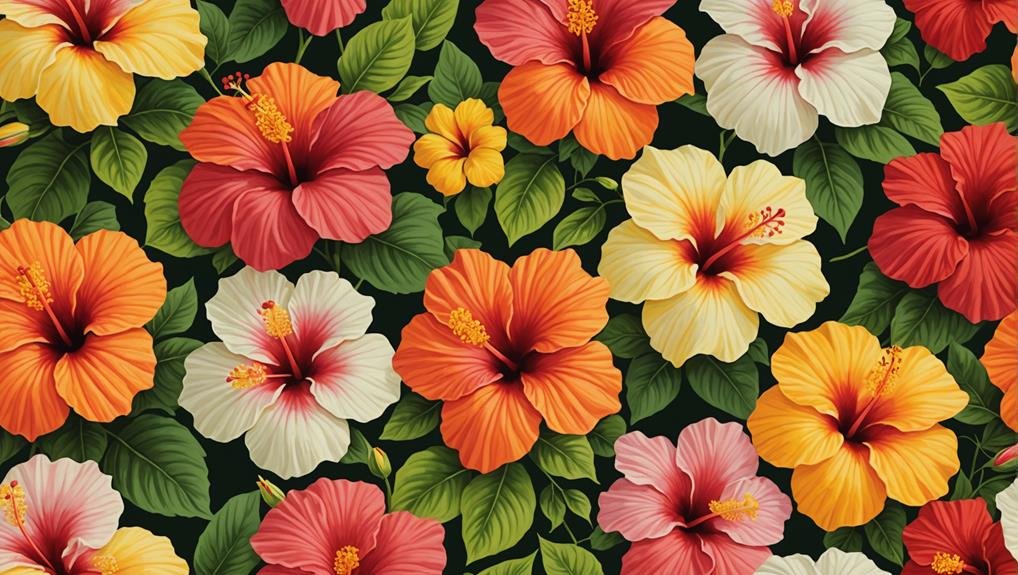
The vibrant palette of hibiscus flowers spans a spectrum of colors, including striking shades of red, pink, orange, yellow, white, and purple. This extensive range allows for versatile use in wedding arrangements, ensuring a perfect match for various themes and color schemes.
Some varieties even boast bi-color blooms, such as red and white or pink and yellow, adding an extra layer of visual interest.
The symbolism of each color can be thoughtfully incorporated into wedding decor. For instance, red hibiscus flowers might symbolize passionate love, while white blooms could represent purity and new beginnings. Pink hibiscus often conveys gentle affection, making them ideal for romantic settings, and bright yellow or orange can infuse a joyous, celebratory vibe.
Hibiscus flowers pair beautifully in bouquets with greenery and other florals, creating a harmonious blend that is both eye-catching and elegant. They can also be used in DIY centerpieces, offering a tropical touch that is both unique and memorable.
Hybrid varieties present an opportunity for creative combinations and patterns, ensuring a whimsical flair that captivates guests. Overall, the diverse color varieties of hibiscus flowers make them an exceptional choice for any wedding celebration.
Latin Name and Taxonomy
Understanding the botanical roots of hibiscus, known scientifically as 'Hibiscus rosa-sinensis,' provides deeper insight into its role and versatility in wedding floral arrangements. The hibiscus falls under the Malvaceae family, which encompasses a diverse range of species known for their large, showy flowers and woody stems. Its taxonomic classification includes over 200 species, each contributing to the genus's rich diversity.
The historical significance of hibiscus is remarkable. Although not native to Hawaii, hibiscus has become emblematic of tropical beauty and is often used in island-themed weddings. Its adaptability to warm climates and preference for acidic soil make it a popular choice in various regions worldwide. The Latin name, 'Hibiscus rosa-sinensis,' underscores its exotic allure and botanical heritage.
Key points of interest include:
- Diverse Species: With over 200 species, the hibiscus genus offers a wide array of options for floral arrangements.
- Malvaceae Family: Known for their large, trumpet-shaped flowers and woody stems, these characteristics enhance hibiscus's aesthetic appeal.
- Historical Significance: Initially originating in Asia, hibiscus has spread globally, symbolizing beauty and versatility in various cultures.
Understanding these botanical nuances helps in appreciating the hibiscus's multifaceted applications in wedding decor.
Geographical Origins

Originating in tropical and subtropical regions, hibiscus has a rich history that spans continents and cultures. Initially found in Asia, this vibrant flower has since achieved global distribution, flourishing in warm, tropical climates across the world. Hibiscus is particularly renowned in Hawaii, where it has become an iconic ornamental plant. Despite not being native to the islands, the flower has adapted seamlessly to Hawaii's ideal growing conditions.
The spread of hibiscus across various regions can be attributed to historical introductions through trade routes. Traders and explorers transported the plant to new territories, where it was cultivated and adapted to different climates. This climate adaptation has allowed hibiscus to thrive in a variety of environments, contributing to its widespread horticultural significance.
The environmental impact of hibiscus is generally positive, as it enhances biodiversity and serves as an important component in many ecosystems. Over 200 species of hibiscus exist, each with unique characteristics and colors, further showcasing its adaptability and appeal.
The flower's horticultural significance is evident not only in gardens and landscapes but also in cultural and ceremonial contexts worldwide. Its global distribution and historical journey underscore hibiscus's enduring allure and versatility.
Season Availability
Seasonal availability of hibiscus flowers is largely influenced by their tropical nature, allowing for year-round access with peak blooms during the warmer months of spring and summer. This makes hibiscus a versatile choice for both indoor arrangements and outdoor weddings.
Given their year-round availability, they are a popular option for wedding planners and florists alike. Hibiscus flowers thrive in tropical and subtropical climates, which guarantees a steady supply even during colder seasons. In colder regions, florists often provide hibiscus as potted plants, enabling their use in indoor arrangements during winter months. This flexibility makes them a desirable option for couples who want to incorporate tropical blooms into their wedding decor, regardless of the season.
For those considering hibiscus for their wedding, it is crucial to weigh both year-round availability and seasonal preferences to achieve the desired aesthetic. The following points highlight key considerations:
- Year-round availability: Guarantees consistent supply, ideal for weddings planned well in advance.
- Seasonal preferences: Peak blooms in spring and summer offer the most vibrant displays.
- Cold weather options: Potted hibiscus plants for indoor arrangements during winter.
Growing Conditions
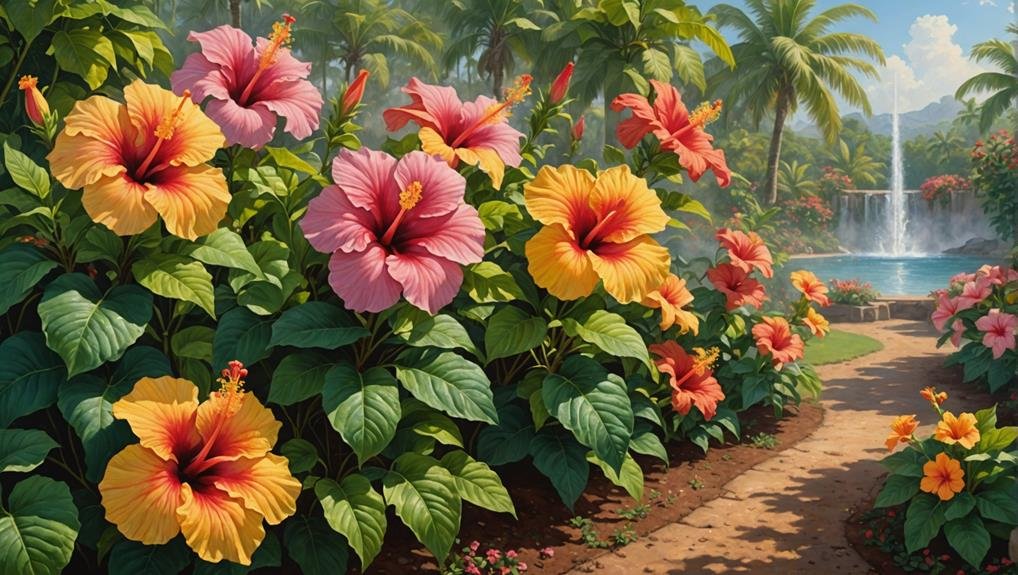
For best growth, hibiscus thrives in a tropical climate with abundant sunlight, warm temperatures, and acidic soil. These conditions are vital to guarantee the plant's vibrant blooms and healthy foliage. The ideal temperature range for hibiscus lies between 60°F to 90°F, making it well-suited for regions with consistent warmth.
Regarding soil requirements, hibiscus flourishes in well-draining, acidic soil with a pH level between 6.0 and 6.5. Ensuring proper soil conditions can greatly impact the plant's overall health and flowering potential. Sunlight needs are equally crucial; hibiscus needs at least six hours of direct sunlight daily to promote strong growth and abundant blooms.
Propagation techniques for hibiscus typically involve taking cuttings from healthy, mature plants. This method is effective and guarantees the new plants maintain the desired characteristics of the parent.
Once planted, regular mulching can help retain soil moisture, regulate temperature, and suppress weed growth. Mulching tips include using organic materials like bark or compost, which decompose over time, adding nutrients back into the soil.
Cultural Significance
Beyond its horticultural requirements, the hibiscus flower holds profound cultural significance across various regions and traditions. This vibrant bloom is more than just an ornamental delight; it carries deep symbolic meanings and spiritual connections that resonate in many cultural traditions worldwide.
In Hindu worship, the hibiscus is revered for its spiritual healing properties. It symbolizes purity and immortality, making it an integral part of religious rituals and ceremonies.
Similarly, the hibiscus stands as the national flower of South Korea and Malaysia, where it represents delicate beauty and national pride. These nations celebrate the hibiscus not only for its aesthetic appeal but also for its embodiment of cultural identity.
In Hawaiian culture, the hibiscus enjoys a place of honor as the state flower. It is frequently used in the crafting of leis, signifying hospitality and friendship. Known as the 'Rose of Sharon,' this flower has also been referenced in ancient texts, symbolizing love, beauty, and perfection. The hibiscus's presence in various mythological cultures further underscores its role in representing different aspects of life, love, and spirituality.
Typical Use in Weddings
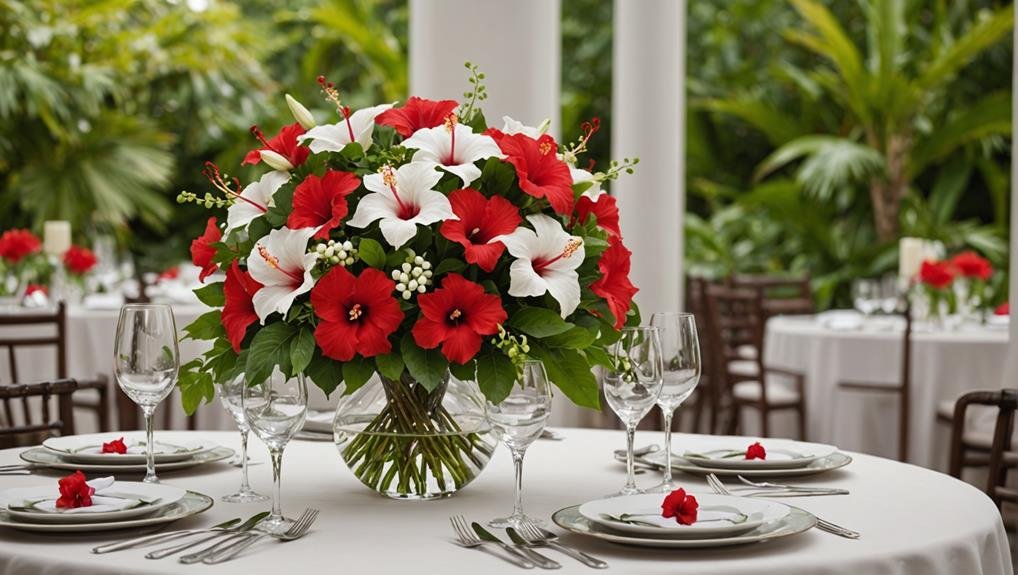
Incorporating hibiscus into wedding celebrations offers a vibrant and exotic touch that enhances the overall aesthetic of the event. Known for its large, colorful blooms and tropical personality, hibiscus is an excellent choice for various wedding elements.
For bouquet inspiration, hibiscus can serve as a stunning focal point, either standing alone or combined with other flowers such as roses, lilacs, and alstroemeria to create a lush, eye-catching arrangement. Its bold colors and unique shape make it a memorable addition to bridal bouquets.
When considering table centerpiece ideas, hibiscus can be arranged with complementary flowers like lisianthus and carnations to craft elegant and dynamic displays. These centerpieces can bring a sense of the tropics to the dining experience, delighting guests with their vibrant appearance.
Additionally, hibiscus can be incorporated into ceremony backdrop designs, providing a striking visual that enhances the romantic atmosphere of the wedding vows. Florists play an essential role in ensuring these floral elements are cohesive and beautifully integrated into the overall wedding theme.
Ultimately, whether used as a focal point or as part of a larger floral arrangement, hibiscus greatly elevates the aesthetic appeal of wedding celebrations.
Alternative Flower Types
Exploring alternative flower types allows for the creation of diverse and visually enchanting wedding floral arrangements that complement the vibrant appeal of hibiscus. Incorporating flowers such as bougainvillea, roses, lilacs, alstroemeria, lisianthus, and carnations can add a unique touch to your wedding decor. These flowers offer a range of colors, textures, and forms that blend seamlessly with the tropical flair of hibiscus, providing florists with the freedom to craft personalized and unforgettable bridal bouquets.
To achieve a cohesive and stunning wedding floral theme, consider the following:
- Bougainvillea: Known for its vivid bracts, bougainvillea adds a burst of color and a tropical feel to any arrangement.
- Lilacs: With their delicate clusters and sweet fragrance, lilacs introduce a romantic and soft element, perfect for unique combinations.
- Alstroemeria: Often referred to as the Peruvian lily, alstroemeria offers a versatile and long-lasting option for diverse floral arrangements.
These alternative flower types not only enhance the visual appeal but also provide diverse options for wedding decor, ensuring that each bridal bouquet stands out. Consulting with a professional florist can guide you in combining these flowers effectively, creating a memorable and cohesive floral display for your special day.
